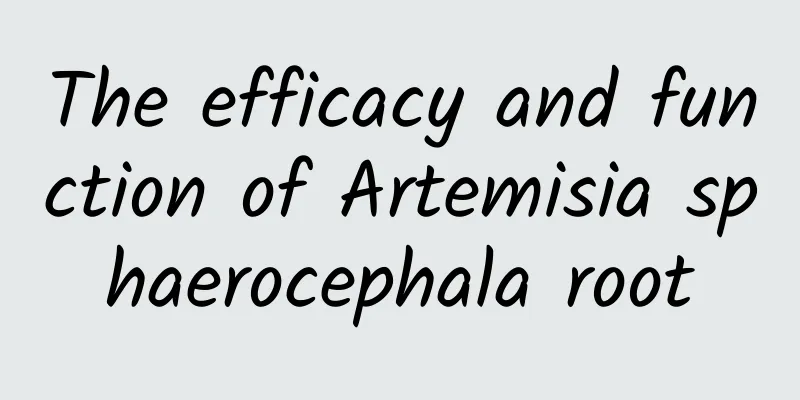The efficacy and function of taro

|
The medical value of taro is beyond our imagination. It is very effective in treating some diseases. There are many substances in taro that are beneficial to the human body. Let’s take a look. [Source] Medicinal material source: The rhizome of the Polygonum multiflorum plant. [Original form] Perennial herb, 1-2m high. The stem is erect, stout, unbranched, with numerous basal leaves and large bracts. The basal leaves are ovate or nearly circular, up to 30cm in diameter, obtuse at the apex, shallowly cordate at the base, leathery, glabrous above, with small protrusions below; the petioles are thick, 8-15cm long; the stipules are membranous, reddish brown; the bracts are ovate or circular, membranous, light yellow, with reticulate veins, 10-20cm in diameter, reflexed, covering the inflorescence, and falling off when flowering. Inflorescence conical, densely branched, glabrous; flowers bisexual, tepals 6, in 2 whorls, persistent, elliptical, light green, 2-3mm long; filaments slender, exserted; pedicels jointed in the middle and lower parts; stamens 9; disk underdeveloped, ovary ovate, with 3 edges, styles 3, shorter, stigma swollen into a head shape. Achenes are broadly ovate with wings, 66-7mm long. [Habitat distribution] Ecological environment: Growing on hillside grasslands at an altitude of 3900-4000m. 【Properties】 Characteristic identification: Roots and rhizomes are conical or quasi-conical. 8-20cm long, 3-8cm in diameter, with residues left at the top, the cork is brown-brown, rough with many transverse wrinkles. The cross section is brown without any spots. The new section shows purple fluorescence under ultraviolet light. Hard texture, bitter taste. [Chemical composition] The roots and rhizomes of Rhubarb contain 4.61% total anthraquinones, of which 3.20% are bound anthraquinones with emedin, physcion, and chryso-phanol as aglycones, and 1.42% are free anthraquinones. It also contains a large amount of tannins. [Pharmacological Action] This product has a weak laxative effect. The inhibitory concentration of its extract on Staphylococcus aureus is 0.5%, which is weaker than other varieties. For the pharmacological effects of the anthraquinone components emodin, emodin methyl ether and emodin phenol contained in this product, please refer to the "rhubarb" entry. 【Nature and flavor】 Bitter; cold 【Functions and indications】Purge heat; remove stagnation; disperse blood stasis; reduce swelling. It is used to treat constipation due to excess heat; delirium and madness; food stagnation and stagnation; dysentery; jaundice due to damp heat; red eyes and headache; amenorrhea; abdominal masses; carbuncle, swelling and furuncle [Usage and Dosage] For oral use: decoction, 6-12g. For external use: take appropriate amount and mash it for application. 【Note】 Pregnant women should take with caution. Commonly used Chinese herbal medicines in Tibet 【Excerpt】 Chinese Materia Medica Having said so much, we can see that taro has many functions. It can also be used as medicine to treat diseases. You might as well know more about these, it will be helpful in your life. |
<<: The efficacy and function of Jasmine
>>: The efficacy and function of crisp
Recommend
Satellite reveals! This is how the United States treats minors who enter the country illegally!
Every day, hundreds of remote sensing satellites ...
How to store fresh chicken head rice
If fresh water chestnuts cannot be eaten in a sho...
The efficacy and function of water hosta
Traditional Chinese medicine culture is profound ...
Alcohol is ineffective! The National Center for Disease Control and Prevention issued a technical guide for Norovirus disinfection in key places
On November 30, the National Center for Disease C...
Technology News | my country has built and opened more than 1.3 million 5G base stations
【Today’s cover】 On the 19th, on Kaisha Island in ...
Monkeypox Science | The "monkey" in monkeypox is not the "monkey" in monkey
On June 24, Taiwan’s Centers for Disease Control ...
What are the medicinal properties of Angelica root?
When you see this title, the first thing that com...
Hundreds of thousands of plants have been named, but there are still many names? Uncovering the "routine" of plant names
Naming plants is a science. I am Rong Ge from the...
Chinese patent medicine for promoting body fluid, nourishing yin and reducing fire
As the pace of life continues to accelerate, many...
Will eating spinach without blanching cause kidney failure? The truth is...
Rumor: "Eating unblanched spinach can cause ...
What are the effects and functions of rapeseed pollen
I believe everyone is familiar with rapeseed flow...
Numerator: 2022 Memorial Day Consumer Survey
Numerator surveyed 1,646 people on Memorial Day, ...
The efficacy and function of Linbeizi
Speaking of Linbeizi, I believe many friends know...
The efficacy and function of black lotus
I don’t know if you have seen Eclipta prostrata i...
The efficacy and function of yellow eggplant flower root
Traditional Chinese medicine culture is profound ...









